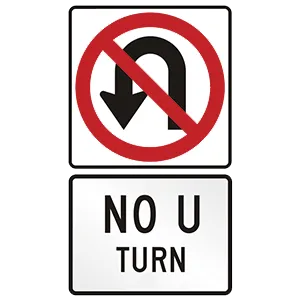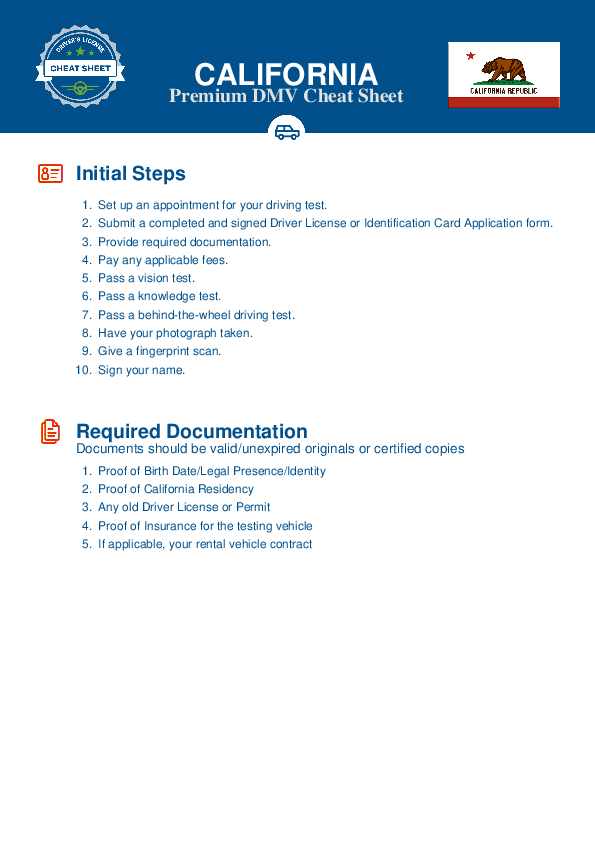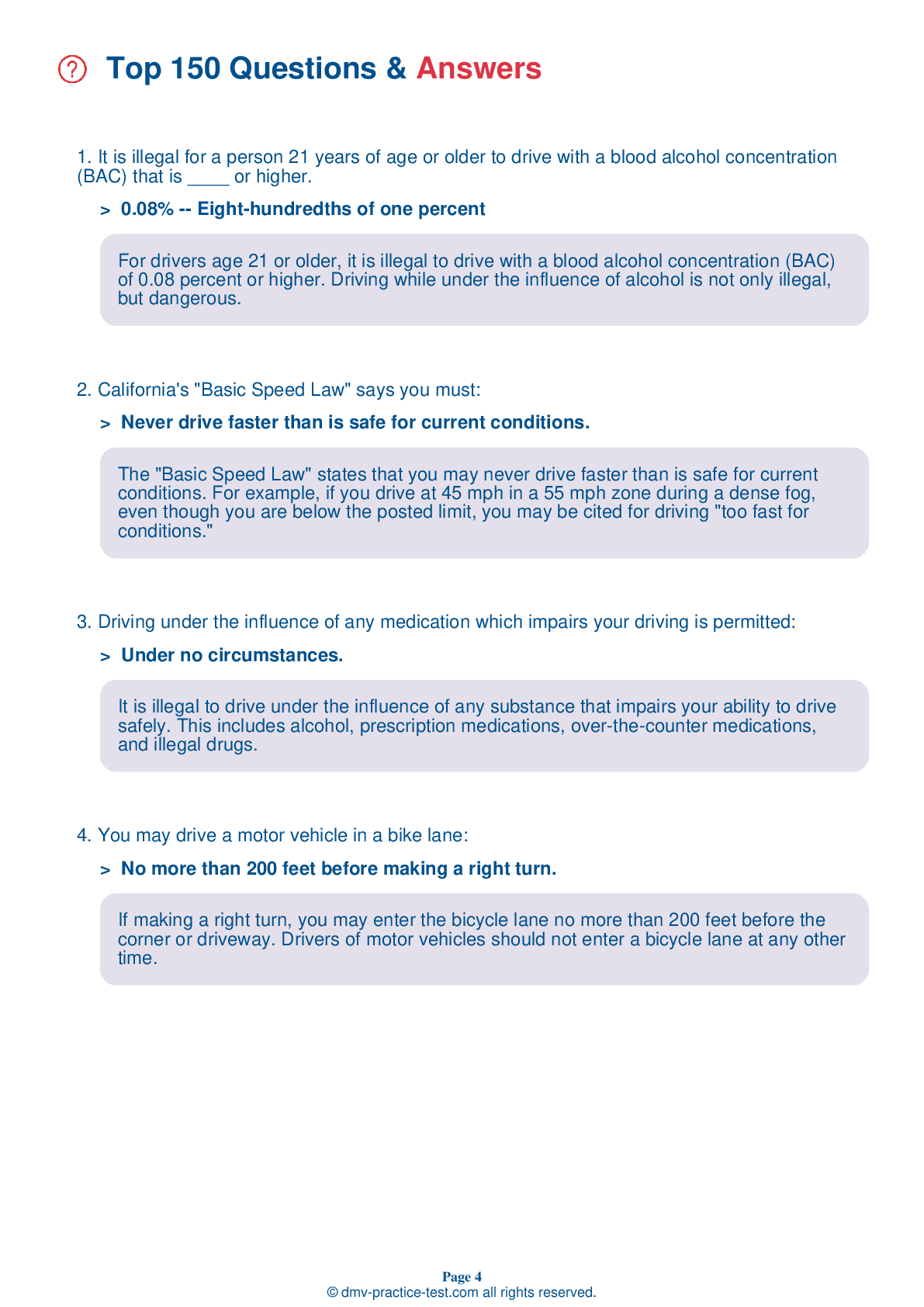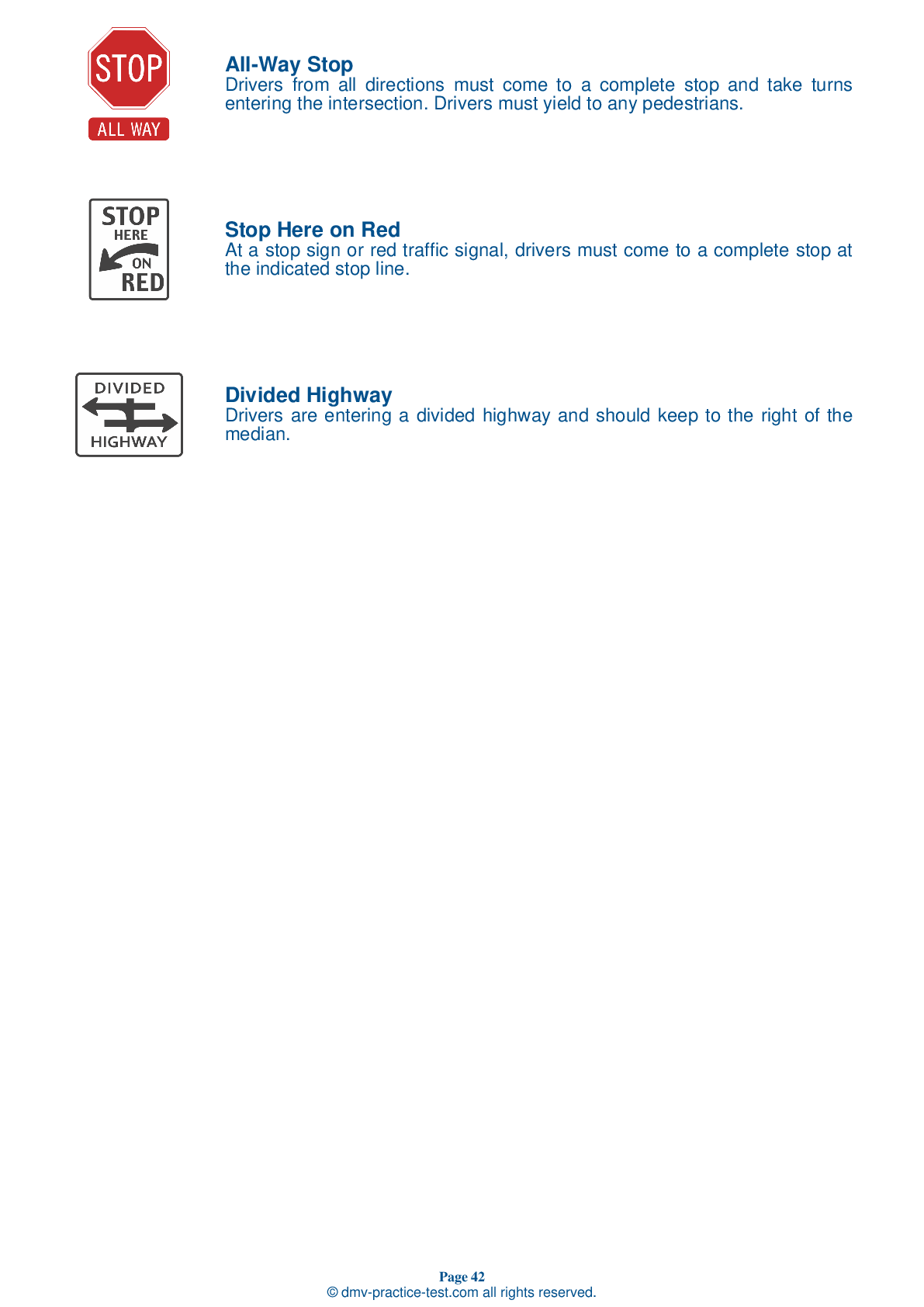FREE California DMV Practice Test #4 Page 3 of 6
This California DMV practice test includes 36 of the most vital road signs and rules questions taken directly from the official California Driver Handbook for 2025. Use genuine questions that are very similar (often identical!) to the DMV driving permit practice test and driver's license exam to prepare for the DMV driving permit test and driver's license exam.
To help you recall the topics, each ca dmv practice test question includes a hint and explanation. The written component of the official DMV test will consist of questions about regulations of the road, traffic signs, and driving statutes, as well as information from the Driver Handbook.
To get the required 83 percent passing score to be allowed to pass, you must correctly answer 38 out of 46 questions (or 30 out of 36 if you are over 18). Use this DMV practice exam to help you prepare for your California instruction permit or driver's license.
How does it work?
California residents using any form of testing help during the test will result in an automatic failure, and the DMV may take further action against your driving permit, so please don't cheat.
Ideally suited for:
- California Driver’s License
- Driver's Learner Permit in California
- CA Refresher Test for Senior Citizens CA
- CA Driver’s License Renewal
What to expect on the CA DMV exam:
- 36 questions
- To pass, you must have 30 accurate answers.
- a passing grade of 83%
- The minimum age to apply;15 ½
13 . This road sign means:

This sign prohibits drivers from making a U-turn. You cannot turn around to go in the opposite direction at an intersection where this sign is posted.
14 . In traffic moving at 50 to 55 mph, you are least likely to have an accident if you:
You should adjust your speed to travel smoothly with the other traffic on a roadway (provided that the other traffic is driving within the posted speed limits). Remember that vehicles moving in the same direction at the same speed cannot hit each other. Crashes involving multiple vehicles often happen when some vehicles are traveling at different speeds than others.
15 . If you come across livestock or other animals on the roadway, you should:
If you are driving and come across an animal of any kind in the road, try to slow down and stop if it's safe to do so. Swerving to avoid an animal can be dangerous because your vehicle may lose control and cause an accident.
16 . If you park facing uphill on a street with a curb, set the parking brake and:
When parking uphill on a road that has a curb, your wheels should be turned away from the curb. When parking uphill on a street without a curb or when parking downhill, your wheels should be turned toward the curb or edge of the road.
17 . Always stop before crossing railroad tracks when:
Expect a train on any track, at any time, traveling in either direction. If you need to stop after crossing the tracks, wait until you can completely cross the tracks before proceeding. Make sure your vehicle clears the tracks before you stop.
18 . When approaching a person who is crossing the street while using a white cane or guide dog, you should:
When approaching a pedestrian who is using a white cane or guide dog while crossing the street, you must stop until the person is well away from your path of travel. Always yield the right-of-way to blind pedestrians.
Need Car Insurance? No problem!
Compare the best rates in California and find a personalized policy that meets your needs.
1. Are You Currently insured ?
2. Married ?
3. Do you own your Home?
4. Do you have more than 1 car ?
5. Have you or a Family Member Honorably Served in U.S. Military ?
6. Your Name
7. Age
8. Zip code
IMPORTANT REMINDER:Auto Insurance is Mandatory to drive in California. Get covered before you hit the road to avoid any fines.
Ranked by best match



